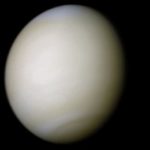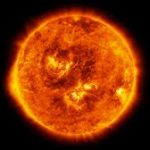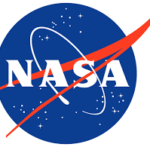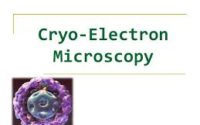Mars- The Red Planet
Mars, the neighbor of Earth is the fourth planet from the sun. The surface of Mars contains abundant quantity of iron. The dampness and warmth of the atmosphere of Mars cause rusting of iron. The rusted iron along with the dusty red soil on the surface of Mars gives a reddish colour to the surface of the planet and for that reason Mars is often described as red planet. Further, the red colour resembles bloodshed in wars and the planet was given the name Mars, after the Roman god of wars.
Comparison of Mars with Earth
Mars has an average distance of 227.9 million km from the Sun. Because of this distance, the sun looks half its size when viewed from Mars than it does from Earth. In many ways the planet resembles Earth. In size, it is half of the earth. The planet contains volcanoes, canyons, deserts, mountains and ice caps at the north and the south poles. Its atmosphere is composed of carbon dioxide, nitrogen and argon. The atmosphere of the planet is thin and hence it does not trap heat as does the atmosphere of the earth. Due to this, the planet is a cold one. Olympus Mons, with a height of 26 km is the biggest volcano in the entire solar system. It is believed to be extinct.
Compared to the axial tilt of 22.5 degrees of the earth, Mars has an axial tilt of 25.19 degrees. The seasons in the planet last twice as long as that in the earth. The planet also experience cold winter and hot summer as in Earth. The planet has two original satellites, Phobos and Deimos.
Time taken by Mars to orbit the sun
Though the planet is smaller than Earth, Mars take more time to orbit around the sun and a day on the planet is approximately 40 minutes longer than a day on the earth. It moves at a speed of 25 km per second. Mars takes approximately 687 days for orbiting round the sun once and hence, a Martian year is nearly double the year on the Earth. Mars covers 227,840,000 kilometers to complete one rotation around the sun.
Mars and water
It was assumed that the planet had an atmosphere with water in it and hence movies and literature portrayed a fictional Martian with flying machines and aliens. But, the planet has now water only in the form of ice. The planet has geographical features like ancient river valley networks, deltas, lakebeds, rocks and minerals. These features are created only when water is available and also some evidences suggest huge floods in the planet about 3.5 billion years back. However, no large bodies of water exist on Mars now. Ice, is visible at the north polar ice cap and more than five million cubic kilometers of ice has been identified at , or near the surface of the planet. Briny water is also identified on the planet.
Mars and satellites
Asaph Halls, an American astronomer discovered two natural satellites in 1877, Phobos and Deimos. They are not exactly spherical like moon and look more like boiled potatoes. They are assumed to be asteroids attracted to the planet due to its gravity. Phobos is a bit larger than Deimos and orbits just 6,000 km above the Martian surface. It travels around mars three times a day, while the Deimos takes 30 hours for its orbits. Phobos is moving closer and closer to mars and it is assumed that one day it will crash into Mars.
Mars exploration and Mangalyaan
Though man is yet to reach the planet, machines have visited and collected valuable data. The Soviet Union, the US, European countries and India have sent crewless spacecrafts to Mars. NASA’s Curiosity Rover was the first spacecraft to land in the planet on August 6, 2012. As of now, there are eight spacecrafts functional in Mars. The US, the European Space Agency and the United Arab Emirates have announced further individual Mars probes to be completed by 2021.
Indian Space Research Organisation (ISRO) launched its Mars Orbiter Mission, Mangalyaan on November 5, 2013. It was India’s first inter-planetary mission. With Mangalyaan India became the fourth space agency to reach Mars and the first country in the world to reach the planet in its first attempt. It was inserted into Mar’s orbit on September 24, 2014. By May 19, 2017 it completed 1000 Earth days on orbit and completed 388 orbits of the planet.
Planet Venus – Twin of Planet Earth
Which is the only element discovered first in space?









